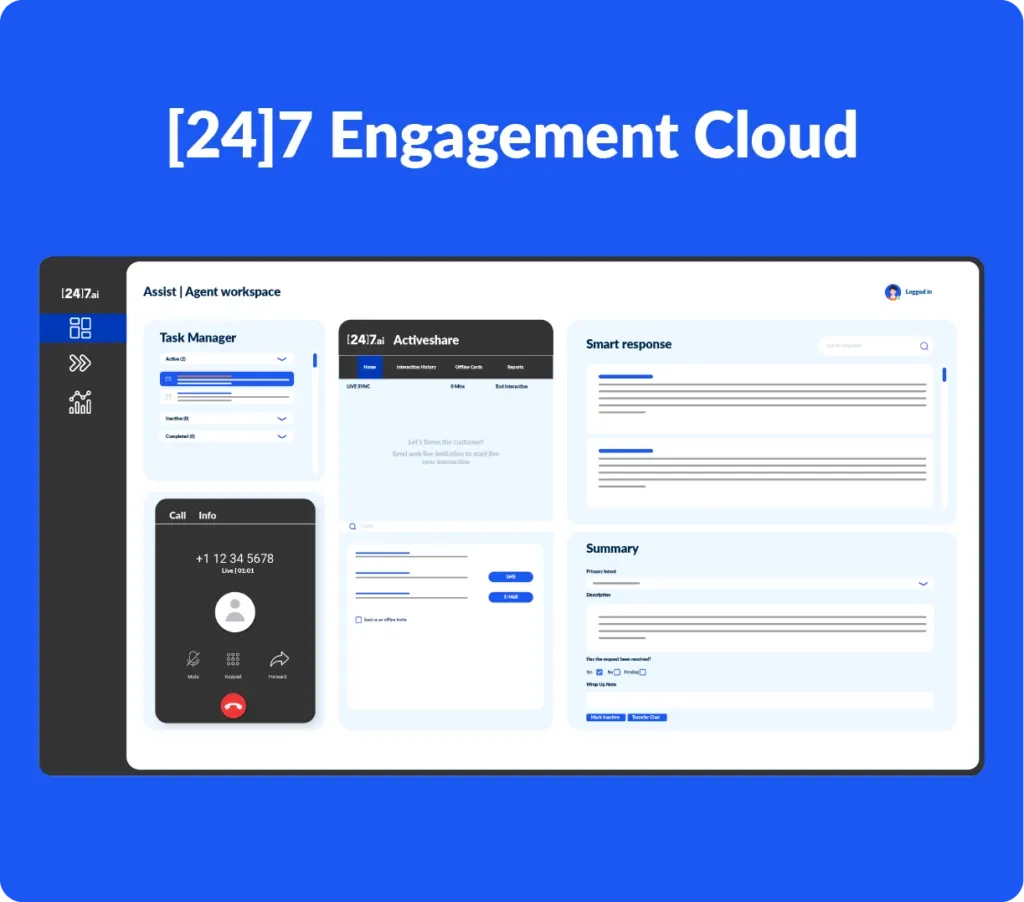It’s interesting how customer service has evolved from being a mere operational necessity to a major factor that can make or break a company’s reputation. Providing personalized experiences to customers across all channels has become a top priority and to achieve this, companies are embracing an omnichannel approach that prioritizes “cohesive” customer journeys.
According to Forrester, “A typical contact center agent manages 10 to 12 interactions an hour, and as many as three concurrently.”
So, for customers to experience a true omnichannel journey and for agents to effectively manage their interactions, they must have access to the whole story. Businesses need to embrace this omnichannel drive by investing not only in technology and channels, but also in the training and support of their customer service representatives who are at the forefront of customer interactions.
Decoding the Omnichannel Puzzle
Having an omnichannel plan means more than just having different ways to reach customers – it’s about making sure customers have a smooth and consistent experience, regardless of the channel they use. This brings about an intriguing need to combine technology and human touch, by integrating voice into the omnichannel experience and providing customers with a unified experience. By empowering agents with tools and training to handle voice contacts alongside digital channels, companies can ensure that they are driving successful customer journeys across all channels.
Harnessing the Power of Automation
Automation and self-service being critical components of omni-channel strategies, can be pivotal in enabling agents to provide faster and accurate responses during customer interactions. The key lies in empowering agents with AI-powered automation tools, providing real-time suggestions and information, that enhance their abilities.
The Role of Unified Data
Empowering agents is also about creating a work environment that boosts their productivity. There is a growing need to develop purpose-built agent technologies that simplify complex interactions.
A unified console or dashboard – that is visually easy to comprehend, customizable, and integrates data from various channels – ensures that agents have a holistic view of the customer journey, irrespective of the touchpoints.
Additionally, equipping agents with insights from predictive analytics enables them to anticipate customer needs, tailor their responses, and provide proactive solutions for efficient problem resolution.
[24]7 Assist, an omnichannel contact center platform, provides agents with a comprehensive view of everything they need for successful customer interactions – from customer journeys to AI-enabled recommendations, from real-time insights to seamless integration with CRMs, all in a customizable widget-based environment.

Feedback Loop: Agents as Stakeholders
In pursuit of a strong omni-channel strategy, regular feedback sessions with agents can provide valuable insights into the challenges they face on the frontline. This feedback loop can drive continuous improvement in processes, tools, and training, making the omni-channel experience smoother for both agents and customers.
As we navigate this landscape, we must remember that technology serves as an enabler, and not a replacement for human touch. Effective training and the right tools equip agents to deliver a personalized experience, enabling them to effortlessly transition between channels while maintaining context and resolving issues promptly. This leads to a unified, seamless customer engagement that is channel-agnostic and resonates with customers at a deeper level. The key lies in not just adopting technology for the sake of it, but in using it thoughtfully to enhance human capabilities and create seamless customer experiences.
Contact us to know more about how our omnichannel solution can create exceptional customer experiences.







